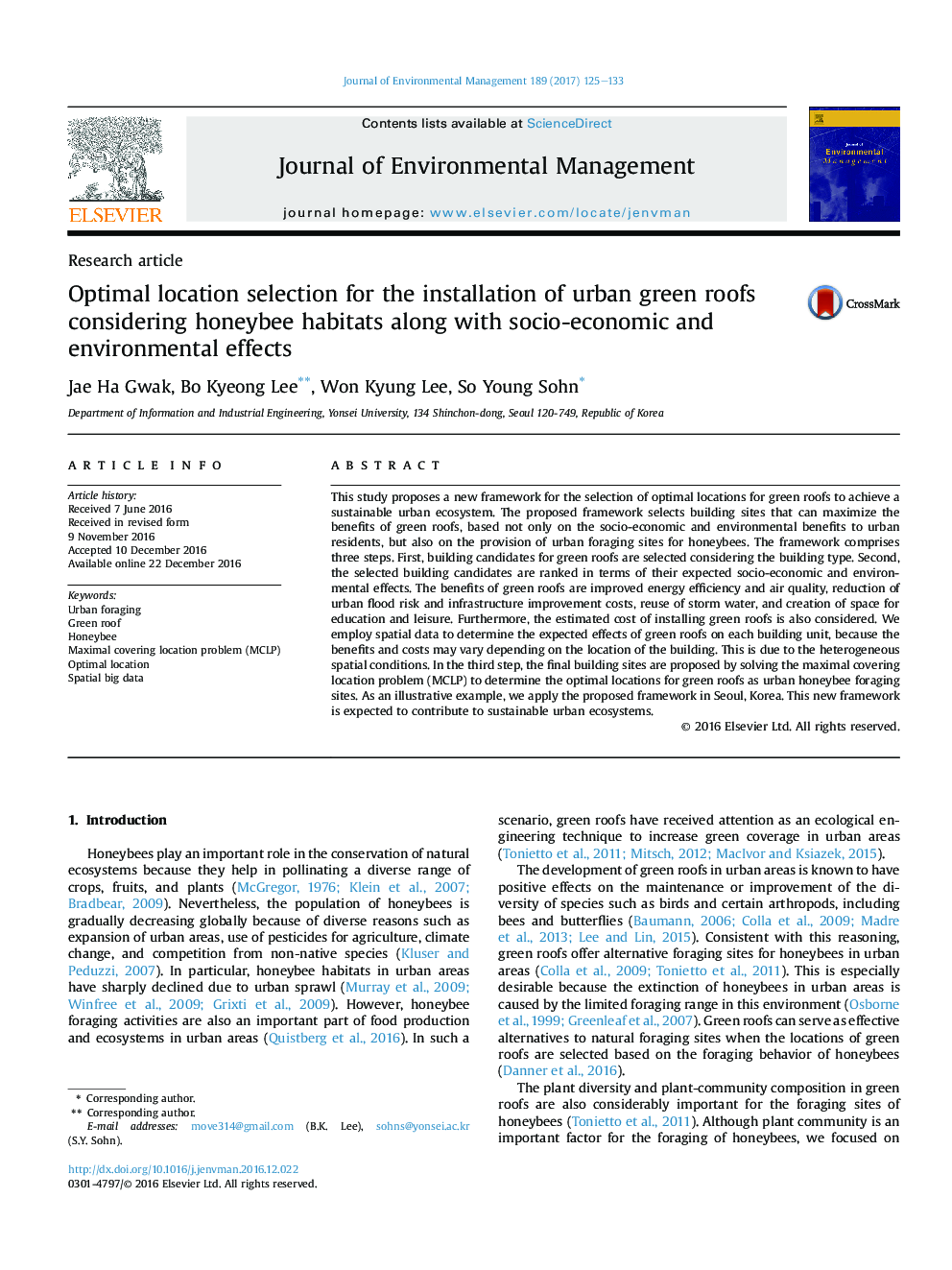| Article ID | Journal | Published Year | Pages | File Type |
|---|---|---|---|---|
| 5117070 | Journal of Environmental Management | 2017 | 9 Pages |
Abstract
This study proposes a new framework for the selection of optimal locations for green roofs to achieve a sustainable urban ecosystem. The proposed framework selects building sites that can maximize the benefits of green roofs, based not only on the socio-economic and environmental benefits to urban residents, but also on the provision of urban foraging sites for honeybees. The framework comprises three steps. First, building candidates for green roofs are selected considering the building type. Second, the selected building candidates are ranked in terms of their expected socio-economic and environmental effects. The benefits of green roofs are improved energy efficiency and air quality, reduction of urban flood risk and infrastructure improvement costs, reuse of storm water, and creation of space for education and leisure. Furthermore, the estimated cost of installing green roofs is also considered. We employ spatial data to determine the expected effects of green roofs on each building unit, because the benefits and costs may vary depending on the location of the building. This is due to the heterogeneous spatial conditions. In the third step, the final building sites are proposed by solving the maximal covering location problem (MCLP) to determine the optimal locations for green roofs as urban honeybee foraging sites. As an illustrative example, we apply the proposed framework in Seoul, Korea. This new framework is expected to contribute to sustainable urban ecosystems.
Related Topics
Physical Sciences and Engineering
Energy
Renewable Energy, Sustainability and the Environment
Authors
Jae Ha Gwak, Bo Kyeong Lee, Won Kyung Lee, So Young Sohn,
